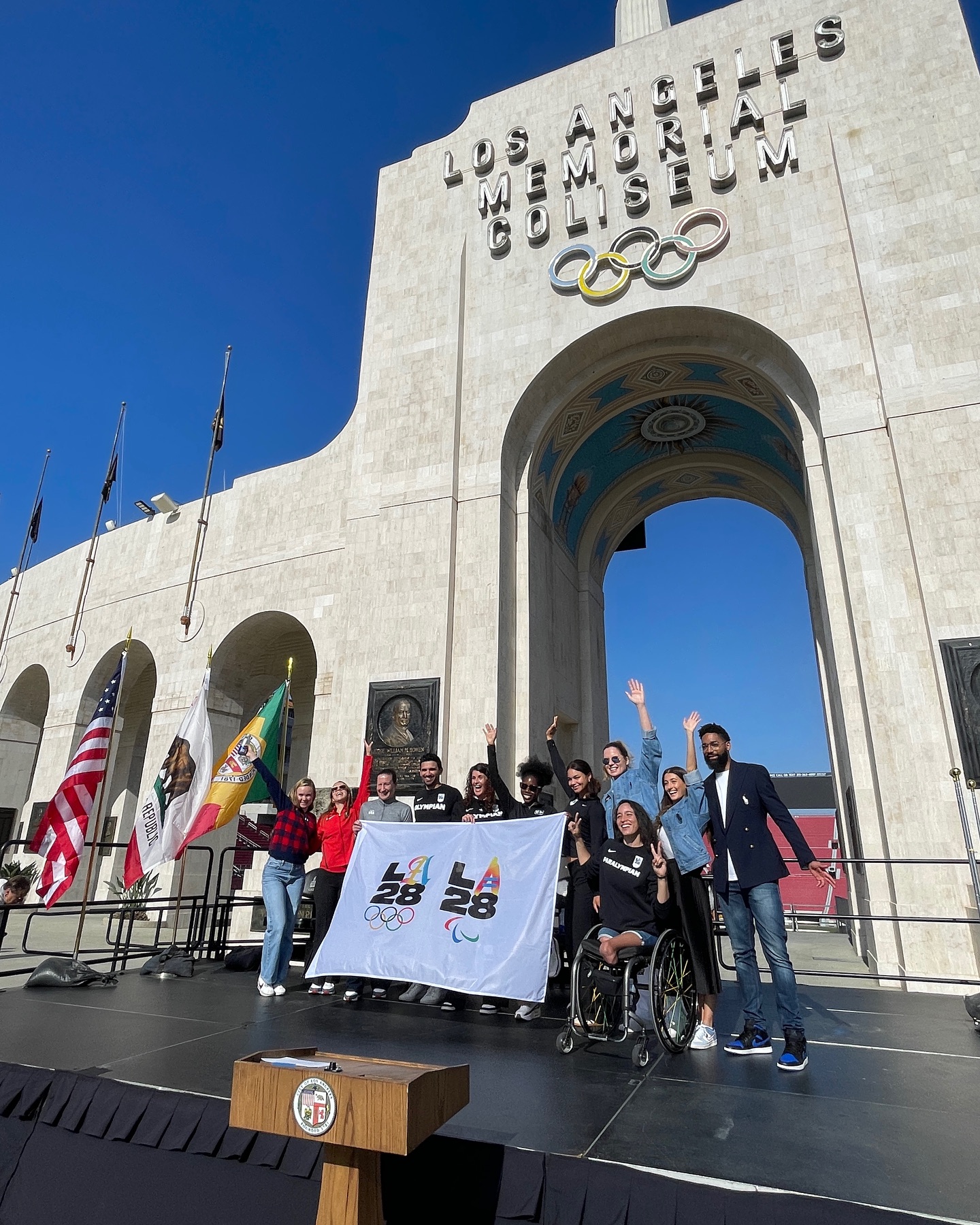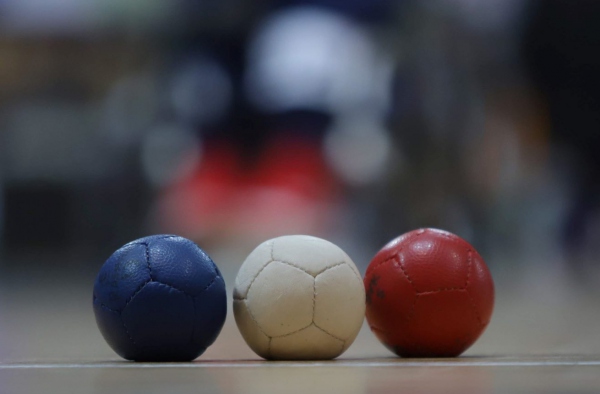By Graham Thomas
With just over three years to go until the LA 2028 Paralympic Games, World Boccia chief executive Paul Trayner is confident athletes will experience an enjoyable and transformational Games.
“I came away feeling really encouraged,” says Trayner, following a recent site visit to Los Angeles.
“The people in LA are friendly, flexible, and there’s a clear sense of purpose. There’s still work to be done, of course, but there’s a very healthy relationship developing between us and the organisers.”
For Trayner and many others within the sport, LA 2028 presents more than just another international competition. It’s a unique opportunity to encourage a sport that is still finding its footing in the United States.
“Given the population size and the number of eligible athletes, it’s surprising boccia isn’t more developed in the U.S.,” he admits.
“But there’s massive potential there, and this Paralympic cycle could be the one that finally unlocks it.”
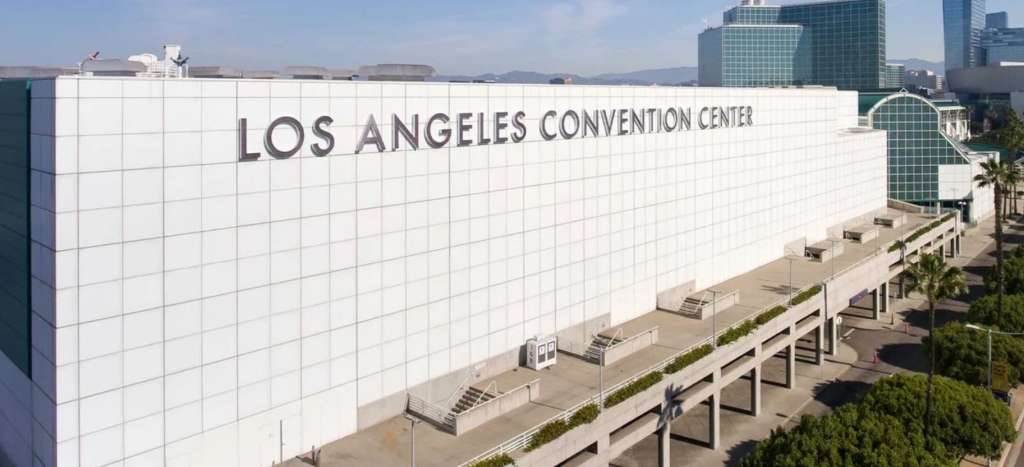
The Los Angeles Convention Center
Before any legacy talk, though, comes the vast logistical task of ensuring athletes, coaches, officials and fans are provided with everything they need for a memorable and successful tournament.
The boccia event will take place inside the Los Angeles Convention Center—right in the heart of downtown LA—alongside other sports like para judo, para taekwondo, para table tennis and wheelchair fencing.
This compact, multi-sport hub is a hallmark of the LA28 venue plan, which emphasises existing infrastructure and tries to minimise the environmental and financial footprint of the Games.
Trayner welcomes this shift. “It’s refreshing to move away from some of the over-ambitious stadiums and venues of past Olympics and Paralympics,” he says.
“Using what’s already there makes the Games more accessible for future host cities. The Convention Center may be more confined than what we had in Paris, but that’s not necessarily a negative. It’s going to feel like a big event.”

The Convention Center is part of a tightly planned network of venues. They, and the athletes’ village, located at the University of California, Los Angeles (UCLA), are all located within a 35-mile radius, with wide, multi-lane freeways.
“This set-up should really reduce travel times for athletes, which is critical,” says Trayner.
“Based on our experience, getting from the athletes’ village at UCLA to the Convention Center will likely take 20–30 minutes. That’s significantly better than what we saw in Paris.”
There are still plans to finalise, over details such as locating athlete lounges in a multi-sport venue, but in general the Convention Center is geared towards large scale indoor sports events, just as the South Paris Arena was in 2024.
As with Paris, considerable thought and effort is going in to not just venue logistics, but the maximum possible accessibility across the city’s locations.
From improved ramps at UCLA to accommodating staff at iconic locations like Dodger Stadium, the CEO’s site visit gave him confidence that LA is preparing with purpose.
“There was a moment at Dodger Stadium that stuck with me,” he recalled.
“We didn’t have the right parking permit for our wheelchair user, but the staff couldn’t have been more helpful. That attitude, that flexibility—it bodes really well for 2028.”
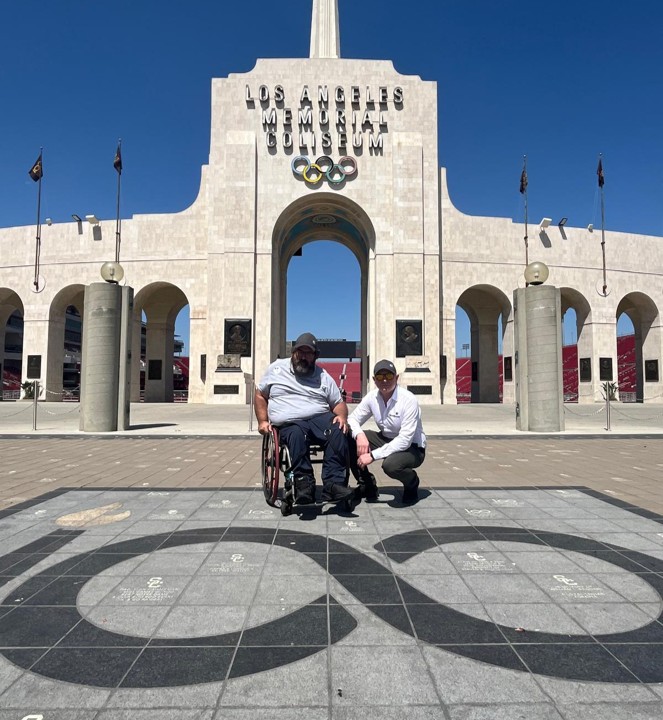
World Boccia chief executive Paul Trayner (right) in LA with World Boccia operations manager, Dom Tremblay.
UCLA will serve as the home for both Olympic and Paralympic athletes—a unified village for the first time since Rio 2016.
Despite the campus’s hilly terrain, Trayner was reassured.
“They’re planning extra walkways and ramps, so I think athletes will find it comfortable and inclusive.”
There are plans for LA to host a boccia qualification tournament ahead of the Games, which would double as a critical test event for local officials and transport systems.
Training for national technical officials starts this year in Alabama, with a view to building up teams, structures, and pathways. The intention is the long-term development of boccia in North America.
There are challenges in developing a niche sport in a vast and decentralised country like the U.S., where disability sports are often filtered through collegiate systems and veterans’ programmes, but the opportunity exists over the next three years for boccia in the USA to build on the platform the Games provides.
In terms of the 2028 Games schedule, the specifics are yet to be confirmed but it’s likely boccia will have a sizable footprint across the opening days which will provide a window to further promote the sport around the globe.
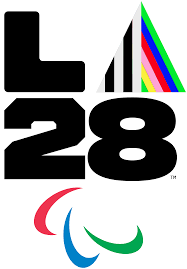
The Games will seek to build on record viewership numbers in Paris, where the overall live audience grew by 40% compared to Tokyo and by 117% compared to Rio,
While the Olympics will be in L.A. for a third time, 2028 will mark the city’s first Paralympic Games.
Scheduled from August 15–27, 2028, events will be spread across diverse, iconic locations from Venice Beach to Long Beach and the LA Coliseum, the stage is being set for a celebration of inclusive sport and global unity.
For Trayner, it’s always about more than just medals.
“If we get the transport right, the accessibility right, the venue right—and we will—then the LA 2028 Paralympics could be a landmark moment for boccia and for the Paralympic movement in the U.S.”

